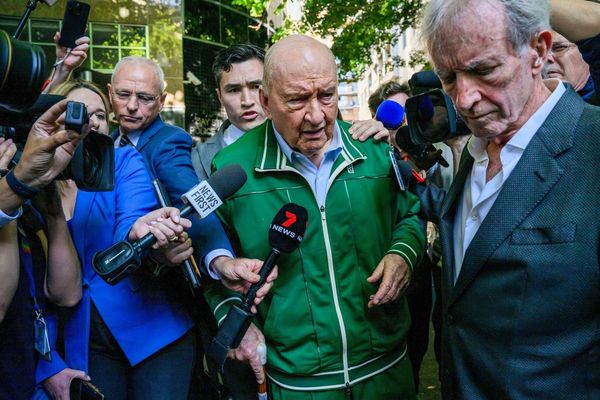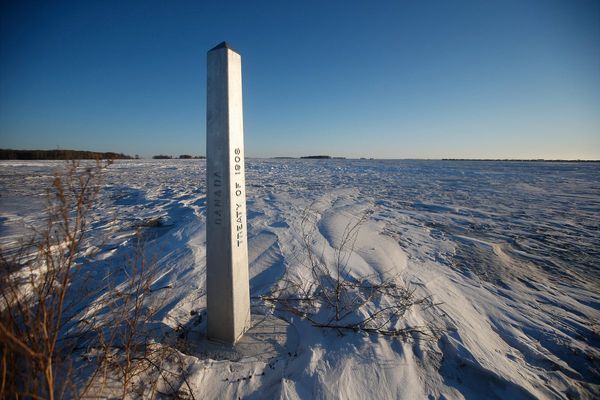Tasmanians can experience a storm on a stinking hot day or in the depths of winter. What causes this awe-inspiring weather?
But how does lightning and thunder form, and how severe do storms get in Tasmania?
How do storms start?
Storms typically start as a small, puffy cumulus cloud which is formed when a parcel of air rises and water droplets condense.
If the conditions are right, the little cumulus cloud will develop and rise up to the top of the atmosphere and spread out into an anvil shape — a cumulonimbus cloud, or storm cloud.
There are three factors that determine whether a storm will form:
- Enough moisture in the air near the ground
- Sufficient buoyancy, or lift, of the air rising into the cloud (aka updraft)
- A triggering mechanism to start it off
Moisture is the fuel that a storm uses to grow and to produce rain and hail.
A large storm can hold a billion tonnes of water and ice.
As moisture in the form of water vapour rises and condenses into water liquid in a cloud, heat is released.
Just like a hot air balloon, the more heat released in the cloud makes the updraft more buoyant.
Often the atmosphere has stable layers that stop air rising to form storms.
A trigger like a cold front or a sea breeze is needed to push through the stable layers and allow the storm to grow.
So, if you have sufficient moisture and buoyancy, and a trigger is able to push through any stability, a storm is able to form.
What causes lightning and thunder?
Most of us have experienced this as a child — jumping around on a trampoline on a sunny day and then extending a finger towards an unsuspecting playmate and … ZAP!
Static electricity built up from clothing rubbing on the trampoline's mat is released into the kid standing on the ground nearby.
The zap you get from a trampoline is not too different to what happens in storm clouds to produce lightning.
In a storm cloud, instead of one person generating static, there are a multitude of static electricity generators in the form of small pieces of ice and snow.
A storm vigorously sucks up warm, moist air from near the surface and ejects it high up in the atmosphere where the temperatures are typically around -30 to -50 degrees Celsius.
As the air rises and cools, water condenses into drops and freezes into ice.
It is the ice that bounces around collecting static charge and eventually falling out of the cloud, bringing its negative charge with it.
The negative charge builds near the base of the cloud and once the charge gets large enough, one almighty spark discharges between the cloud and ground — lightning!
The electrical spark of lightning splits air molecules into atoms and heats it up to around 30,000 degrees Celsius — releasing as much as a gigajoule of energy.
This causes an enormous shock wave which we hear as thunder.
The further away lightning is, the longer it takes to hear — that is why we hear rolling thunder.
The Tasmanian experience
Storms are usually bigger and longer-lived on the mainland, due to more heating over a larger land area.
As a result, southern parts of the mainland have on average around two to 10 lightning strikes per square kilometre per year, and up to 50 in the tropical north.
Around Tasmania, we only get up to one strike on average per square kilometre per year — but we can still, on occasion, get significant and damaging storms.
The frequency of severe thunderstorms is slightly greater around the north coast and hinterland of Tasmania than in other parts of the state.
This is due in part to Bass Strait providing a good source of moisture and the hills nearby helping to organise the storm.
There are several examples of severe Tasmanian storms.
Early one dark, winter morning in 1992, Smithton experienced a tornado embedded in a storm.
It damaged 13 houses, hit a largely forested area, and produced a 14-kilometre path of damage, 50 to 150 metres across, of fallen trees.
There were also a few unfortunate cows that were killed when they were hit by flying sheet metal.
An eyewitness reported that, remarkably, the tornado was glowing.
This is thought to be a result of static electricity discharge from material swirling about in the tornado core.
In 2009, Scottsdale also experienced a winter tornado that damaged around a half a dozen homes and left a path of destruction for multiple kilometres.
This was the first time a tornado in Australia passed directly over a weather station, with a 194 kph wind gust recorded.
In February 2007, Cape Bruny had a super cell move over and drop at least 6 centimetres of hail and strong winds that stripped leaves off trees.
Michael Conway is a meteorologist with the Bureau of Meteorology in Tasmania







